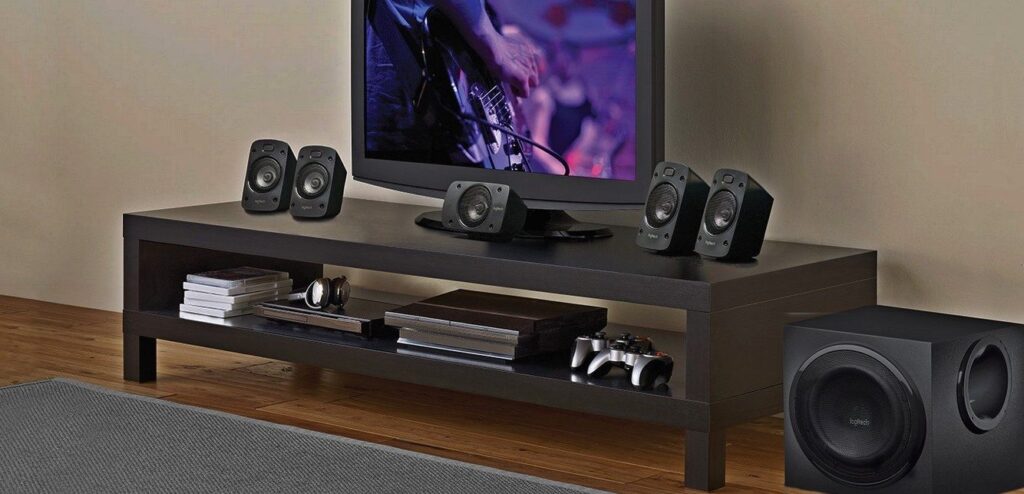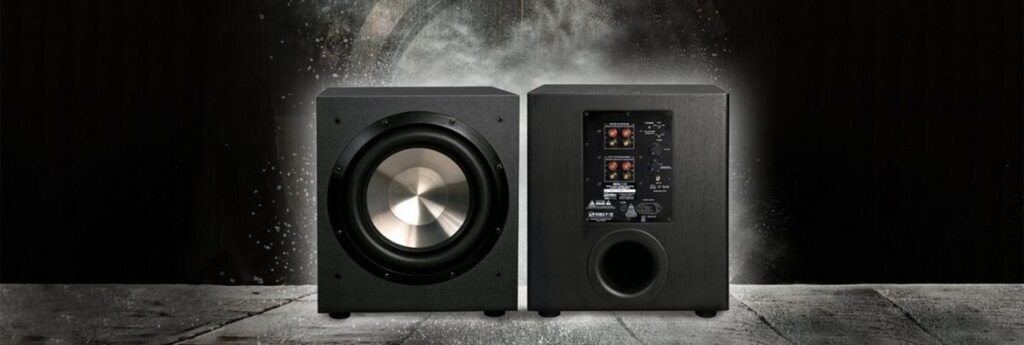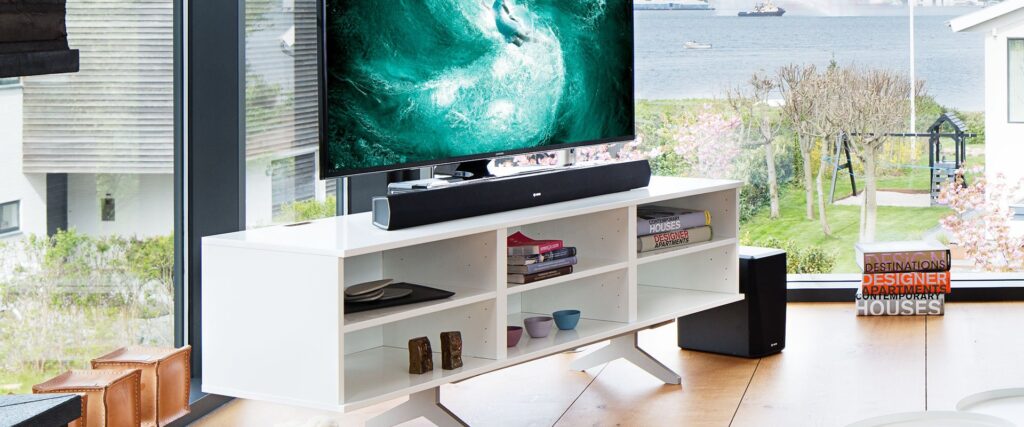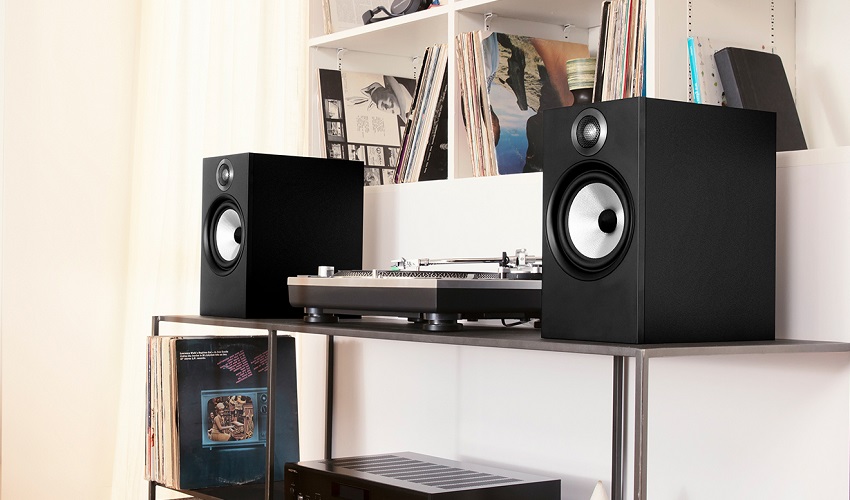A projector-based home theatre system could be the ultimate cinematic home viewing experience if you set it up the right way. However, it does take a bit of planning and DIY expertise to pull it off, so this guide will show you how to set up a home theatre system with a projector.
Unlike expensive OLED and QLED screens, you can pick up a sub-$1,000 projector and floor speakers to get a true big-screen movie experience. Some people frown over projectors because of their comparably lesser contrast and color quality, but today’s projectors have come a long way.
You can now have the ultimate 4K, larger-than-life experience Trusted Source Have a Top-Notch Film Experience Without Leaving Home - WSJ With cinemas a distant memory, this easy home-theater strategy can bring upgraded movie nights to your living room. www.wsj.com right in your home for way less money. All you need is surround sound audio, a premium-quality projector, and a way to connect your video and audio sources.
Yes, you can and should connect your projector to your home theater system. That’s the TL;DR answer, but things are far more interesting in practice.
Just like a real cinema, there is a long list of dynamics that go into positioning and linking up video and audio in a home to create a high fidelity theater experience. There are lots of ways to connect your home theater’s receiver to your projector’s input/output board including HDMI slots, RCA cables, 3.5mm jacks, and even wireless signals.
Learning how to set up a home theater projector is about worrying over the image and audio quality you want. This brings many other factors into play such as positioning, room acoustics, type of projector, and projector screen size. Here is a short breakdown to bring things into perspective.
A video projection system places certain demands on your room. It needs to have good light control, that is, the ability to darken stationary light sources such as windows. The room’s dimensions will also determine the type of projector you get such as short-throw, DLP, LCD, LCD, or laser projector.
Projectors reach an average screen size of about 100-120” (diagonal), but they can go up to 300”. This gives you the power to have your projections as large as you want them to be. You can choose to project on a plain wall, but a projector screen is a much better option. Whichever option you choose, ensure that the bottom ⅓ of the screen is at eye level.
Projector screens are designed to enhance contrast, reduce reflection, and provide the best video quality by offering an ultra-smooth surface. If you really want to splurge, the Elite Screens VMAX2 120-inch projector screen is the ultimate choice.
The Elite VMAX2 is motorized and backed with fiberglass, but what our experts really liked about it is its sharp image quality and enhanced contrasts which makes it perfect for HD display.
You can choose to place your projector directly in front of the screen, in the back of the room on a raised platform, high up in the ceiling, or even behind the projector screen. Wherever you choose to place the projector, you will need to do some image alignment and adjustments.
If you are in doubt, WikiHow has a pretty good home theater projector setup diagram to help you out.
A surround sound system has four basic types of speakers:
Your media source could be an Amazon Firestick, a set-top box, a PC, or a gaming console – perhaps all of the above. Your home theater’s receiver provides a convenient bank of HDMI and sound input to link all these up easily.
The receiver will likely have instructions on how to link each of these, but you will need a bunch of speaker cable, HDMI cables, clips, and some raceways to get it around the room.
As you can tell, planning is probably the most important step in setting up a home theater and projector system. Once you have a rough idea of what you need to do, the next step is to acquire the right equipment.
In addition to your home theater system and media devices, there is some more equipment you will need to set up your home theater system with a projector.
Choosing a projector for your home theater system is a tough job. There are many factors to think about including room size, resolution, brightness, and of course, your budget. Commercial projectors can cost anything from $500 to over $2000, but our testing shows that one of the best projectors for your home theater is the Epson Home Cinema 2150.
The Epson 2150 projector features a bright 2,500 lumens of color brightness and displays 1080p Full HD, which is amazing for the price range. Most importantly, it has excellent controls including keystone, vertical shift, and zoom, making home setup and configuration a breeze.
Once you have your projector, you can start by setting it up in a dark room on a white or grey painted wall surface. In most cases, this will suffice. If that doesn’t work out, you should definitely get yourself a good projector screen to help increase video quality.
Your image and sound will have to travel some distance around your room to the various components. For that, you will need decent HDMI connections capable of carrying high-bandwidth HD audio and 4K content. For distances farther than 25ft, active HDMI or fiber-optic HDMI cable may be your best bet.
Whether you install your projector in the back of the room, near the ceiling, or in the front, it will need a power outlet close by. In this case, it’s wise to have a professional electrician rig one up for you close to where you will be installing the projector. They can also run your media cables through your walls or ceiling while at it.
You will also need a robust surge protection system for your home theater system. You should already know this, but your home theater and projector can be fried by power surges, lightning, and other electrical faults. If you can afford it, consider getting a power conditioner for maximum power protection.
When you’re done setting up your home theater and projector, you’re likely to end up with four or more remote consoles. This isn’t practical, so a universal programmable remote can help you control everything from a single platform.
The programmable functions allow you to turn everything on or off with a single button, control individual functions, and much more. The Logitech Harmony is a universal favorite for just this purpose, with its painless setup and compatibility with almost every home device you have.
Once you have all the necessary equipment, the rest should be easy enough. If you are not handy with DIY projects, both the projector and home theater system are best installed by a professional home theater expert. Otherwise, it’s simple enough to do it on your own with only a few basic tools.
Just like your TV, the projector will form the focal point of your home theater. Start by doing a rough positioning test by holding the projector in your hands to find the best distance and angle before setting up the table, tripod, or ceiling mount. You will also need to do some display positioning for the best image.
Most projectors have an onboard wizard to get you through the installation and configuration process. There are also lots of video and blog tutorials provided by manufacturers and DIY experts to help you out if you get stuck.
The next step is to set up your surround sound system. If you’re a true audiophile, there are highly detailed guides on room acoustics, speaker positioning, types of cables, and whatnot. For basic connectivity, following the manufacturer’s instructions should set you up with pretty decent sound.
However, you should definitely use only high-quality shielded speaker and HDMI cables. When you are installing them over longer lengths, electronic noise and weakening signals can play a role.
Your home theater receiver will have all the input and output ports you need to link up the video and audio sources. It may look complicated at first, but the manufacturer’s instructions will have lots of setup diagrams and instructions to help you out.
Whether you want to play a game of Minecraft on your new big screen or watch the latest HBO series, the final part of setting up your home theater and projector is plugging in your sound and video and checking that everything works fine.
At this point, you have several options to connect your projector to your media sources and home theater system.
Projectors are no longer old school and boring. Quite the opposite, in fact – projector technology has advanced to a point of rivaling the best 4K and HDR TVs.
If you are looking for an authentic big-screen cinematic experience, setting up a home theater system with a projector is the way to go. Projectors with modern technology are so much easier to connect with your surround sound system to ensure epic video and audio.
All you need to do is invest some money and time into the whole project, and you will win your fair share of bragging rights when it comes to home entertainment.





